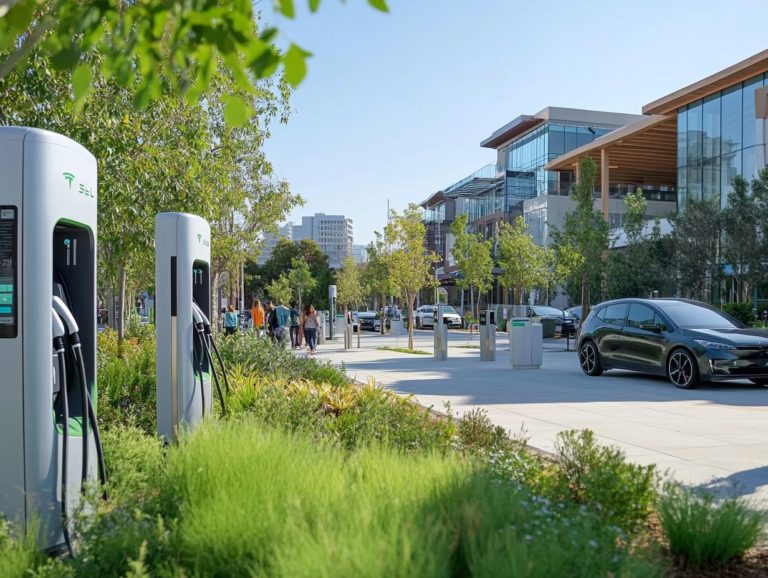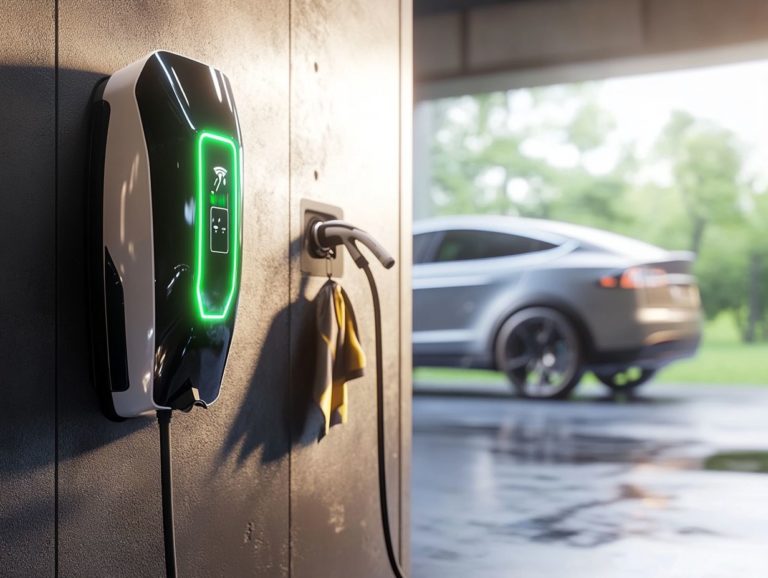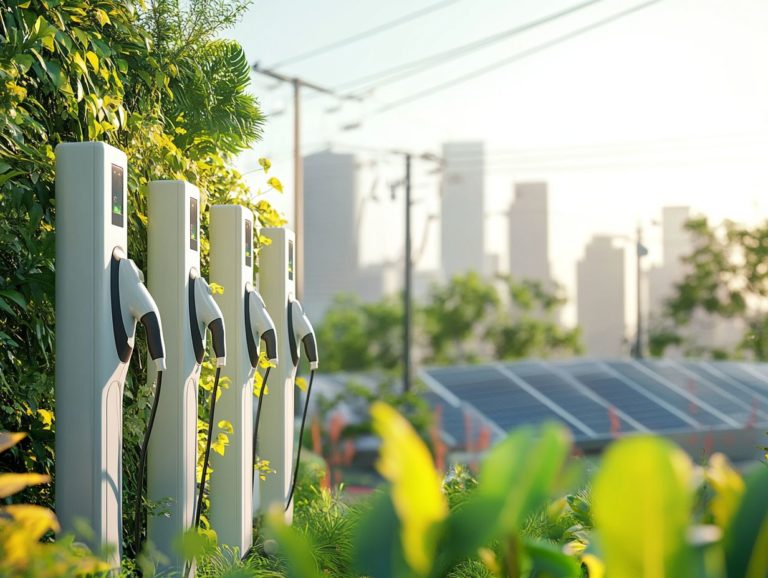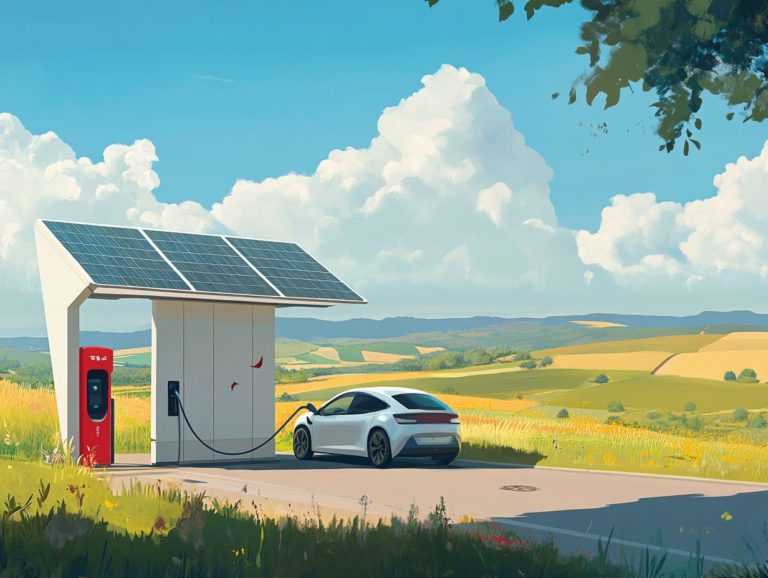The Challenges of Charging Infrastructure Expansion
Join the electric vehicle revolution! As electric vehicles (EVs) gain traction in the transportation landscape, robust charging infrastructure is becoming crucial.
This article delves into the advantages charging networks bring to the table for EV adoption. It also highlights the current state of these systems, their limitations, and the challenges holding back their expansion.
Discover urgent solutions that could transform the future of charging infrastructure today! From financial hurdles to regulatory roadblocks, explore innovative approaches poised to redefine our transportation future. Embark on this journey as you envision a greener tomorrow.
Contents
- Key Takeaways:
- The Importance of Charging Infrastructure
- Current State of Charging Infrastructure
- Challenges in Expanding Charging Infrastructure
- Potential Solutions to Address Challenges
- Future Outlook for Charging Infrastructure Expansion
- Frequently Asked Questions
- What are the main challenges of charging infrastructure expansion?
- Why are high costs a challenge for charging infrastructure expansion?
- How does the lack of standardized infrastructure affect charging infrastructure expansion?
- Why is limited availability of charging stations a challenge for expansion?
- What is the role of adequate power supply in charging infrastructure expansion?
- How can these challenges be addressed for successful charging infrastructure expansion?
Key Takeaways:
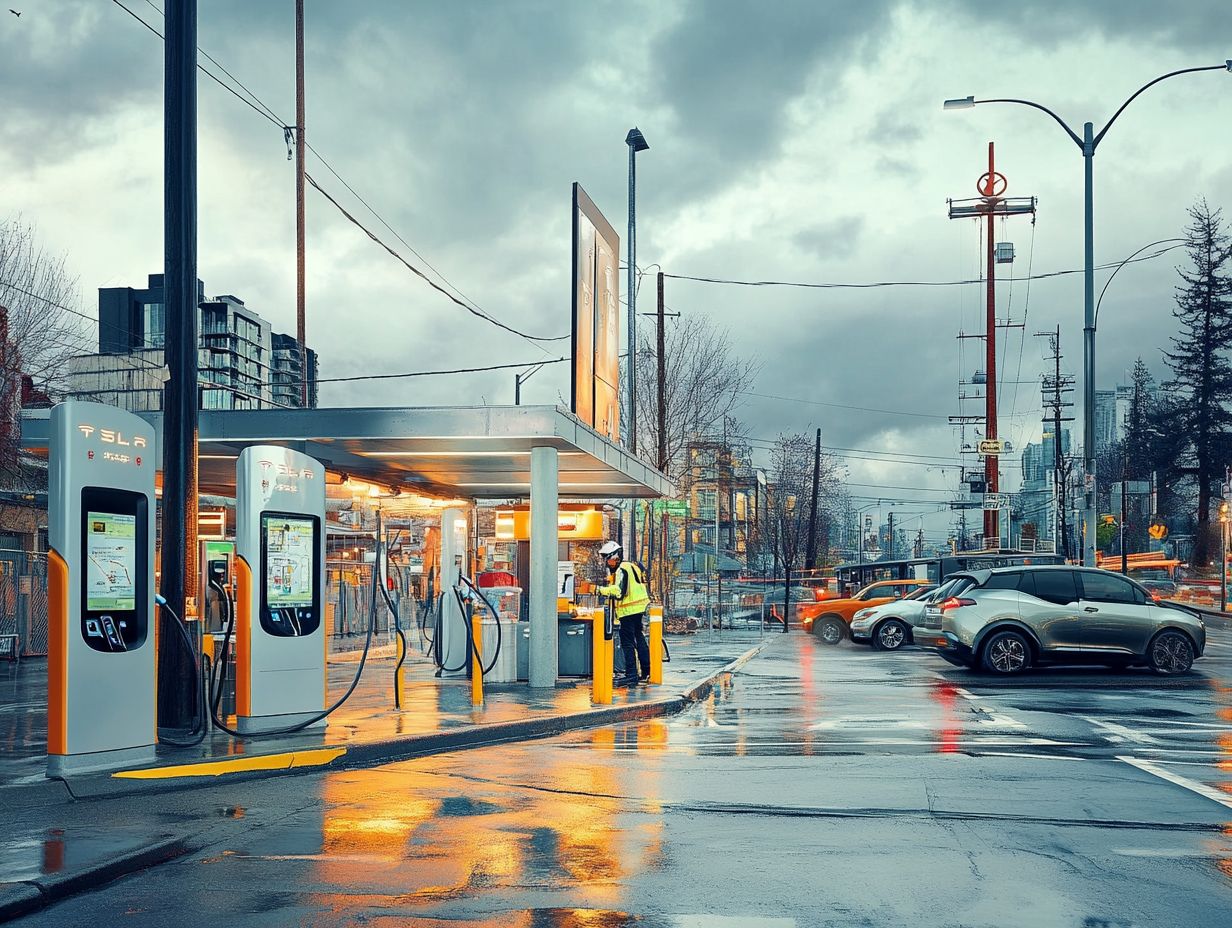
- Investing in charging infrastructure is essential for a sustainable electric vehicle future, providing convenience and range confidence for drivers.
- The current state of charging infrastructure is limited, with existing networks facing challenges such as high costs and lack of regulations and policies.
- To overcome these challenges, innovative technologies and strategies are needed to expand charging infrastructure and meet the projected increase in demand for electric vehicles.
The Importance of Charging Infrastructure
The charging infrastructure is paramount for the widespread adoption of electric vehicles (EVs). It significantly influences consumer confidence and the overall charging experience.
A comprehensive network of charging stations with fast-charging options and accessible public locations alleviates range anxiety. This ensures you have convenient charging solutions at your fingertips.
This infrastructure supports electric micromobility and plays a vital role in integrating renewable energy into the grid. This paves the way for a more sustainable future in transportation.
Benefits for Electric Vehicle Adoption
The advantages of a comprehensive charging infrastructure cannot be overstated in encouraging the adoption of electric vehicles. It reduces charging anxiety and enhances the total cost of ownership.
With various charging options and government incentives, you can transition to electric mobility with confidence. Convenient and affordable charging solutions are within reach.
Research shows that over 70% of potential electric vehicle buyers hesitate due to concerns about limited charging options. A robust network equipped with fast chargers can ease these worries, making EV ownership highly appealing.
The total cost of ownership takes a notable dip; for example, a report from the International Council on Clean Transportation shows that owning an electric vehicle can save you upwards of $4,800 over a typical 15-year lifespan compared to traditional gasoline vehicles.
Government incentives, such as rebates and tax credits, add even more value. In states like California, these incentives have led to a remarkable 30% increase in EV purchases in areas with extensive charging infrastructure.
These real-world examples underscore the pivotal role that effective charging solutions play in bolstering electric vehicle market penetration.
Current State of Charging Infrastructure
The current landscape of charging infrastructure presents a mix of promise and challenge. Rapid advancements in EV technology and growing consumer interest are reshaping the future of transportation. To understand this shift, consider the evolution of public EV charging infrastructure; however, existing charging networks struggle to keep pace with this surging demand.
The rollout of fast chargers capable of recharging vehicles in a short time is progressing. Yet, significant hurdles persist in providing sufficient public charging and electric fleet charging capabilities to meet the rising population of EV drivers.
Existing Networks and Limitations
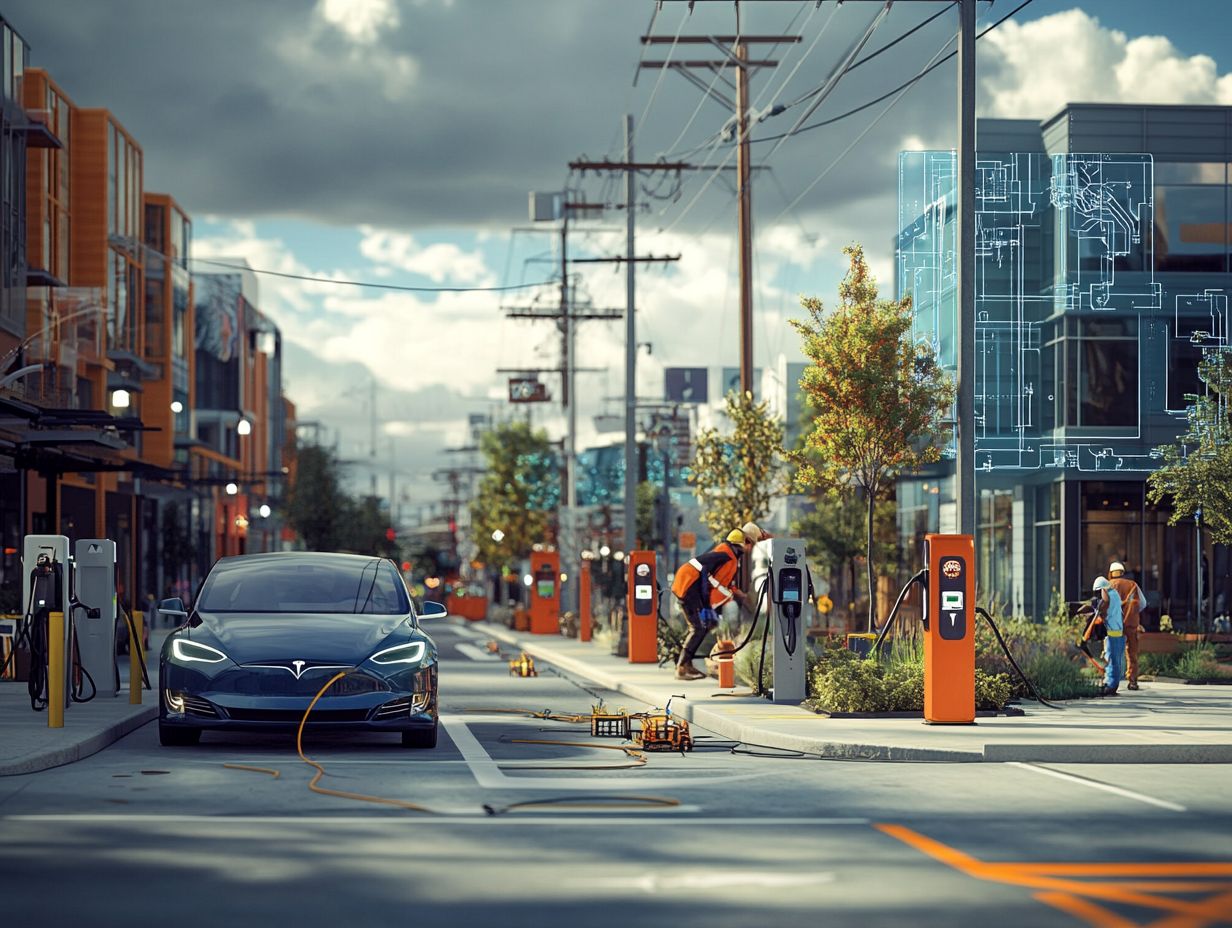
Existing charging networks are becoming more common, yet they still face substantial limitations, especially in rural areas where infrastructure challenges linger. This means there aren t enough charging stations or they are hard to get to, impacting your electric vehicle (EV) charging experience. Issues like insufficient grid capacity, inconsistent power supply, and high installation costs create hurdles for expanding charging solutions in these less populated regions.
The contrast between urban and rural charging capabilities is striking. Urban areas typically offer many high-speed chargers and dedicated stations. In contrast, rural locales often have very few or none at all. This lack of access can discourage potential EV adopters who may hesitate to make the leap without reliable charging options nearby.
For example, a study found that nearly 78% of urban residents have access to a fast charger within 10 miles, but that figure drops dramatically to just 20% in rural settings. Consequently, this uneven distribution of charging infrastructure not only limits your choices but also reinforces the perception that electric vehicles are primarily for urban dwellers. This stifles overall market growth.
Challenges in Expanding Charging Infrastructure
As the demand for electric vehicles continues to rise, you’ll encounter several challenges that hinder the expansion of charging infrastructure. These include installation costs, the need for utility upgrades, and the intricate web of regulatory and policy hurdles, which highlight the impact of charging infrastructure on EV adoption.
Such infrastructure challenges not only slow down the deployment of charging solutions but also add maintenance costs that can discourage both private and public investment in essential EV charging networks, highlighting the role of government in charging infrastructure.
Cost and Logistics Challenges
Cost and logistical challenges play a significant role in the deployment of charging infrastructure. High installation costs and ongoing maintenance expenses can limit your ability to expand charging station management and operations. These hurdles can also negatively affect the overall EV charging experience for users, potentially creating barriers to wider consumer adoption.
To tackle these issues effectively, a multifaceted approach is essential. Collaboration among stakeholders government bodies, private companies, and utilities is crucial to streamline processes and cut down on expenses. For example, adopting innovative technologies, such as modular stations that can be easily relocated or upgraded, could help alleviate some of these logistical burdens. Financial incentives like grants or tax breaks could offset initial costs and encourage businesses to invest in this vital infrastructure.
By strategically navigating these challenges, you can enhance accessibility and convenience for electric vehicle owners, ultimately contributing to a more sustainable future.
Regulatory and Policy Roadblocks
Regulatory and policy roadblocks present significant challenges to the expansion of charging infrastructure. Inconsistent standards and a lack of government incentives can stifle innovation and hinder the deployment of EV infrastructure. Now is the time to address these roadblocks and understand the importance of sustainable EV charging solutions to accelerate the growth of charging networks!
The complexities surrounding local regulations, permitting processes, and building codes can dramatically slow the roll-out of essential charging stations. To navigate these barriers, it s crucial for authorities at various levels to collaborate and streamline processes, ensuring that electric vehicle (EV) adoption is supported by a robust infrastructure.
Government incentives such as tax credits, grants, and rebates can play a pivotal role in motivating private investment and fostering partnerships among stakeholders, including utility companies, automakers, and local businesses. Noteworthy examples, like California s initiatives to triple the number of charging stations over the next decade, underscore the necessity of unified efforts to overcome these obstacles and promote a sustainable electric mobility future.
Join the movement to enhance EV charging accessibility and drive change in your community!
Potential Solutions to Address Challenges
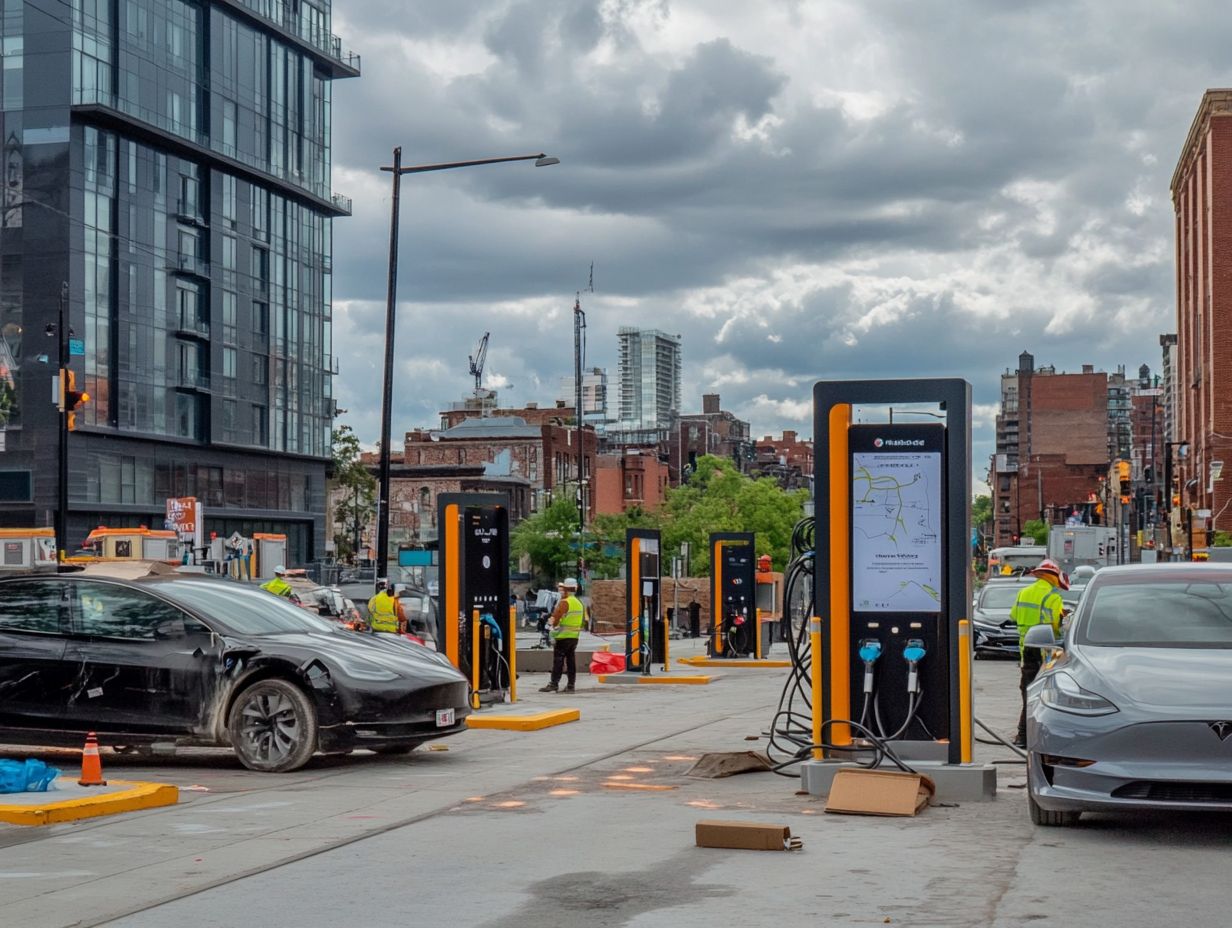
To tackle the challenges of charging infrastructure, innovative technologies and strategies are essential. This includes developing advanced charging solutions and collaborating with grid operators.
Implementing strong energy management systems and promoting the ability to use charging stations from different networks can significantly enhance the efficiency and accessibility of charging networks. This paves the way for a more sustainable future.
Innovative Technologies and Strategies
Innovative technologies and strategies play a pivotal role in transforming charging infrastructure. Advancements in charging technology, seamless integration of renewable energy sources, and battery storage systems are key components. By adopting open hardware standards, developers can create versatile charging solutions that cater to the diverse needs of electric vehicle owners.
Installing ultra-fast charging stations reduces downtime, making electric vehicles much more appealing for long-distance travel. Adding solar panels to charging stations captures clean energy and minimizes the carbon footprint linked to charging.
With vehicle-to-grid technology, parked electric vehicles can supply power back to the grid. This contributes to a more resilient energy ecosystem. These innovations streamline the charging process, enhancing overall user experience and facilitating a smoother transition to electric mobility for a broader audience.
Future Outlook for Charging Infrastructure Expansion
Get ready! The future of charging infrastructure is looking bright and full of possibilities. With advancements in EV technology and increased investments in grid capacity and power supply, a more robust charging network is on the horizon.
This proactive strategy ensures that your transition to electric vehicles aligns seamlessly with a sustainable future for transport.
Predictions and Projections
Predictions for the charging infrastructure landscape suggest a substantial increase in charging locations. This growth will be bolstered by enhanced public outreach efforts and government incentives encouraging electric vehicle adoption. This strategy aims to provide a seamless and efficient charging experience.
As electric vehicle adoption increases, the anticipated rise in charging stations will alleviate range anxiety and improve accessibility for consumers. Community engagement initiatives, such as informative workshops and local events, will demystify the charging process and highlight its benefits.
Furthermore, government programs that subsidize charging installations are likely to influence both the private and public sectors. This fosters a widespread commitment to the EV ecosystem. Such collective efforts not only boost consumer confidence but also position electric vehicles as a practical choice for a wider audience, ultimately contributing to a sustainable future.
Frequently Asked Questions
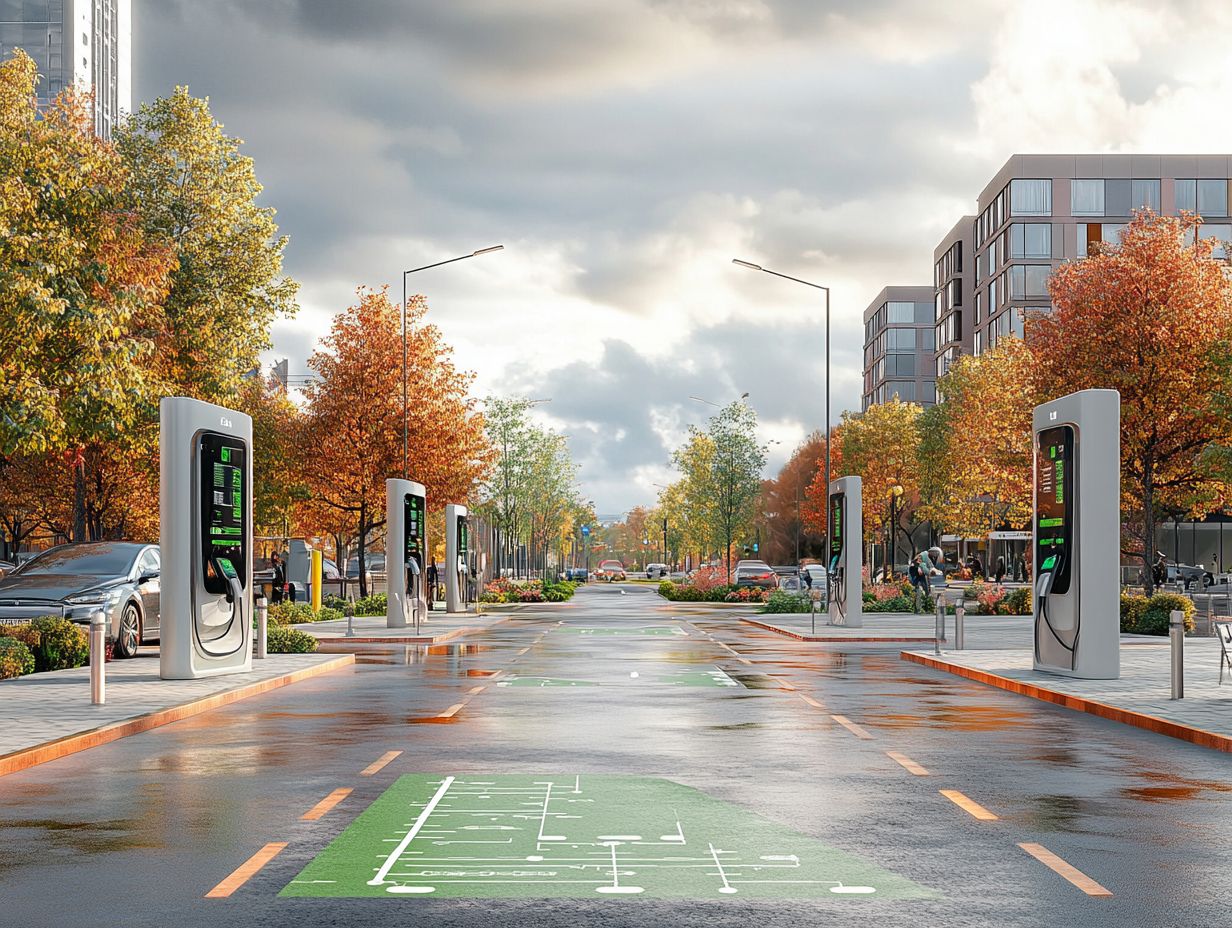
What are the main challenges of charging infrastructure expansion?
Charging infrastructure faces some big challenges, such as high costs, inconsistent setups, fewer charging stations, and the need for reliable power. Understanding the future of EV charging infrastructure development is crucial to addressing these issues.
Why are high costs a challenge for charging infrastructure expansion?
Installing charging stations can be expensive, especially in rural areas or places without existing electrical infrastructure. This makes it difficult for companies and individuals to invest in expanding charging infrastructure.
How does the lack of standardized infrastructure affect charging infrastructure expansion?
Currently, various types of charging stations and connectors can confuse electric vehicle owners. Standardized infrastructure would simplify the charging experience, allowing drivers to use any station easily.
Join the electric vehicle movement today!
Why is limited availability of charging stations a challenge for expansion?
Few charging stations can discourage people from buying electric vehicles. If charging isn’t easily accessible, many may stick with gas-powered cars.
What is the role of adequate power supply in charging infrastructure expansion?
Charging stations need a lot of electricity. In some areas, the power grid isn t ready for this demand, which creates a real challenge for expanding charging options.
How can these challenges be addressed for successful charging infrastructure expansion?
Governments and businesses can team up to build standard charging infrastructure. They should also provide incentives for individuals and companies to install charging stations and promote electric vehicle use.

